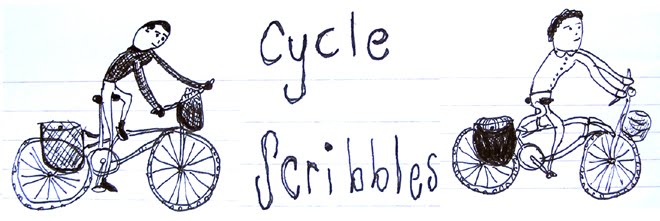

Being shut off from the outside world for a big chunk of last century has given the older generation of Albanians a unique style. We were big fans. Men in particular seemed to take a lot of pride in their dress, wearing two piece suits and ties, hats, and home knitted vests. It was particularly noticable in some of the older men that they took pleasure in wearing sharp clothes and combining pieces with flair.
We were interviewed randomly for a local tv youth show in Tirana about our perspective on the fashion in Albania as "Western Europeans". They seemed interested to know if Western Europeans would change there style to fit into the predominantly Islamic culture here and how they found the fashion in Albania. We mentioned we really liked the style of the older generation and found the younger generation dressed pretty similar to back home but maybe less revealing for women and less sloppy in general. We also mentioned we hadn't felt any pressure to change what we wore there as people seem pretty relaxed. It was just a pretty short fluff piece but afterwards it did prompt us to observe and ponder the styles as we wandered around the capital.
 We noticed that brand names were popular and prominent. The guys in particular were very uniform, looking maybe like someone in the UK who spends a lot of money at the mall. There is a bit of Italian-influenced tailoring and colour and gangster bling occasionally but it's predominantly a pretty standard look. Everywhere in the world with advertising will have people forking out bigs bucks for the latest status boosting brand names, but here it seems to dominate. Hopefully the initial excitment of having access to outside fashion will wane and a better balance between modern influence and local creativity and flair will arrive. I suppose its a sign of self assurance when a place finds its own style and people aren't afraid to be playful outside the fashionable style.
We noticed that brand names were popular and prominent. The guys in particular were very uniform, looking maybe like someone in the UK who spends a lot of money at the mall. There is a bit of Italian-influenced tailoring and colour and gangster bling occasionally but it's predominantly a pretty standard look. Everywhere in the world with advertising will have people forking out bigs bucks for the latest status boosting brand names, but here it seems to dominate. Hopefully the initial excitment of having access to outside fashion will wane and a better balance between modern influence and local creativity and flair will arrive. I suppose its a sign of self assurance when a place finds its own style and people aren't afraid to be playful outside the fashionable style.This also seems to extend to the choice of cars in Albania, with luxury cars dominating the roads. I'm not sure of the figures but real or fake Mercedes appear to make up more than half the cars we saw on the road. It feels like people are making up for lost time to get their consumer hit.

















































